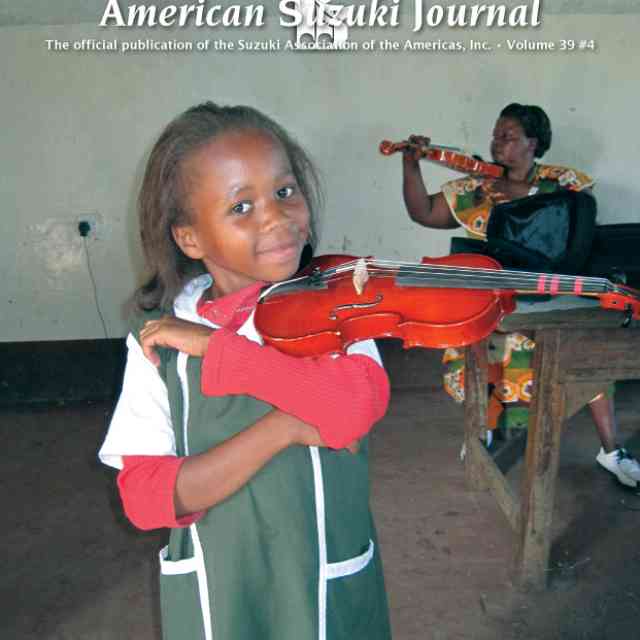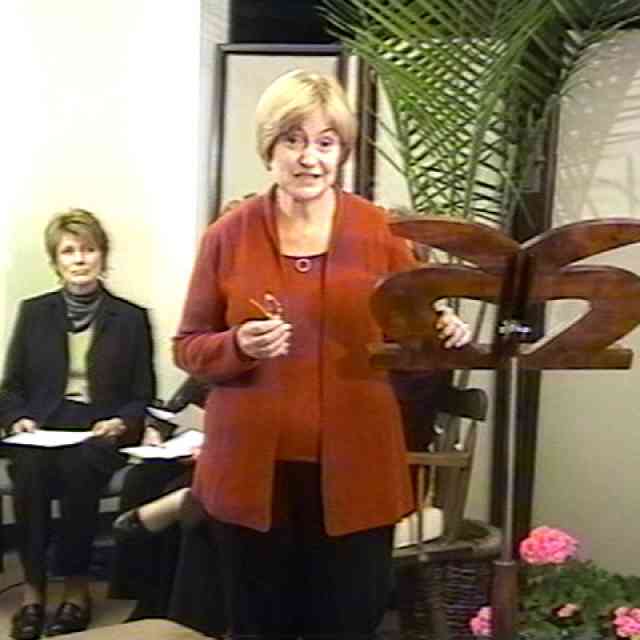How long did you serve on the SAA board before becoming Chair?
I served for six years, two of them as chair elect.
What aspects of the Chair office surprised you the most?
Probably what surprised me the most was beginning to understand the enormity of the CEO’s job and how fortunate we are to have such a caring, dedicated and intelligent person who understands the method in that position.
In addition to this, I guess I was surprised at how important it was for the Chair to provide the motivation between meetings to continue working on SAA projects, once back in one’s own environment. Thank goodness for online tools and conference calls.
Lastly, I was surprised by how important it was to be a good listener and to make sure every board member had the opportunity to speak his thoughts in a comfortable, non-threatening environment. It became clear to me that paying attention in a meeting one hundred percent of the time was critical. Developing the ability to bring conversations to a conclusion with a plan in mind for future action was probably my biggest challenge.
Sometimes teachers are reluctant to serve on board positions, feeling that their experiences as teachers would not be of use. Do you feel that your various teaching experiences—Ithaca, Corning, Hartt (to name a few) gave you insights or experiences that were helpful in your role as Chair?
I am a firm believer that we are always learning, no matter what situation we find ourselves in. Everything I have learned from birth seemed to come in to play as Chair. Certainly being Chair of the Suzuki department at Hartt and attending monthly chair’s meetings for the past twenty-some years and my thirteen years as director of the Institute has given me incredible experience in dealing with challenging situations. As teachers, we are dealing with the public in many ways. Whether it is holding parent meetings, conversing at receptions, speaking at concerts, or presenting outreach concerts, we are constantly developing our leadership skills, which of course come in handy while serving on the board. Plus just the fact that one of the SAA’s values is life long-learning, which we all ascribe to, puts us in a mode in which we are constantly searching for a deeper understanding. One of the board’s most important jobs is to envision the future of the SAA and the method to ensure the legacy will continue and grow. We do this by creating policies called “ends.” The ends are simply written but have great depth. It is then up to the CEO to work towards creating the situations for these ends to flourish. As teachers, we follow Robert Duke’s mantra of having a vision of your student as an accomplished learner and working towards that in every lesson. As a board member, I dare say that we hold a vision of the SAA and the Suzuki Method as an accomplished mission and constantly work towards achieving that mission.
Teri, at all the SAA Retreats and Conferences you always appear so gracious and composed. Were there moments that you felt that you had too many plates to keep spinning in the air, and if so, how did you manage to keep them afloat?
This question gave me quite a chuckle. It always seems there is never enough time to prepare. Of course being a bit of a procrastinator myself does not help this situation. The week before each Conference or Retreat, I would find myself walking through the aisles at Staples looking for folders with the most multiple pockets. Believe it or not, I am not comfortable speaking publicly. I have to have practically every word written out to feel remotely at ease. I think it may have been at the last retreat when I realized there were nine times when I was going to have to “take the mic” in varying degrees of importance and length. This included planning and presenting at the SPA facilitation training session which started two days before the retreat, running the teacher trainer meeting the day before, running the Annual General Meeting, presenting a violin session, and speaking about what leadership meant to me, just to name a few.
I must say that retreating to my room for a half hour of quiet time was one way I could maintain any semblance of calmness. I would add, however, that the conference coordinators do such a wonderfully thorough job that the chair has very little to do with the organization of the event except for the fun part of brainstorming. Hence, all I had to do was make sure my presentations were written out, printed before I left home, and in their own little pocket in my treasured folder. I do want to say that having incredibly supportive friends who are ready to hold you up when you are feeling particularly vulnerable is priceless.
Did you find it challenging balancing your own teaching studio with the Board work? Did you develop any organizational or coping tips that helped you to stay on top of things that you would like to share with teachers?
It is important to be realistic about your teaching load. Since my studio is largely filled with teens who have been with me for many years, I chose to teach a slightly reduced number of weeks per year rather than reduce my load. This allowed me to attend board meetings without having to worry about rescheduling so many lessons. The other thing I tried to do was to build a strong studio spirit by having recitals in special places followed by receptions as well as having an annual Christmas party/sight-reading festival at the spacious home one of my very generous parents. As far as offering any organizational tips, I would recommend planning far in advance for recitals and outreach projects. These are two things that really keep your students motivated and when you wait too long to organize them, all of a sudden there is no room on your calendar, or no space left to perform in.
Do you have moments that were particular highlights or projects that especially touched you?
I have several projects and moments that were very special. One such project was the production of the first Suzuki alumni CD as in incentive gift for the SAA Annual Fund. To be involved in finding and identifying a number of former Suzuki students now involved in the music profession was so gratifying and fulfilling, so much so that it lead towards the creation of the second CD.
Other memorable projects that happened during my term as chair, not necessarily board events, included the historic first ever International Teacher Trainer’s Conference which was literally breath taking, the Virtual Leadership Retreat and the Parents as Partners Online workshop.
At the same time though through a separate committee, the new Suzuki Principles in Action (SPA) Course was developed. Seeing the manuals for that course after more than five years of writing the course was quite a thrilling experience.
How do you see the SAA developing in the next few years? What advice would you give to a young teacher who wants to be involved in SAA committee work but is feeling tentative about reaching out?
I see the SAA continuing to work towards fulfilling our mission of making excellent Suzuki education sought after and available for all peoples throughout the Americas. By fine tuning our teacher development program, providing recognition for excellent teaching through the Certificate of Achievements Level 1 and 2 (under development) and creating more on line resources, we are educating our teachers to a higher level of understanding, to have higher standards, to hold a vision for each of their students, and to nurture and coax excellence from each individual.
I would definitely advise a young teacher to go to the Conference, see what it is all about, take in as many of the opportunities as possible. Then I would advise them to start their SAA journey by volunteering to do something small at the Conference the following year. This is such a great place to meet people, find where your interests lay, allow people to get to know you and your strengths. Within their own community, a young teacher could consider hosting a SPA course for their local learning community, and perhaps even initiate plans for eventually forming a chapter affiliate in their area. Of course one of the easiest ways to get involved is to write an article for the ASJ. We are always looking for new spins on ideas that we are central to the core of Suzuki teaching.
Do you have special projects that you are currently working on?
I am currently serving as chair of the Teacher Development Advisory Team. In this committee, we discuss issues that come up relating to teacher training and its delivery. In addition, now that the SPA course has been launched, we are looking at how to expand upon the Practicum course and developing a mentor system to encourage continued growth, exploration and a deeper understanding of the art of teaching.
In closing, I just want to say that serving on the board and as chair of my professional organization was a true highlight of my career. Since I am so thankful to have chosen this path as my life’s work, I feel strongly about making sure the future of Suzuki for our upcoming leaders will be strong, organized and yet open for growth. I feel so fortunate to have been handed the opportunity to participate in just a small portion of the future growth and stability of the Suzuki Method and Association in the Americas.
Thank you, Teri, for giving so much of yourself and your expertise to the Suzuki Association of the Americas!








